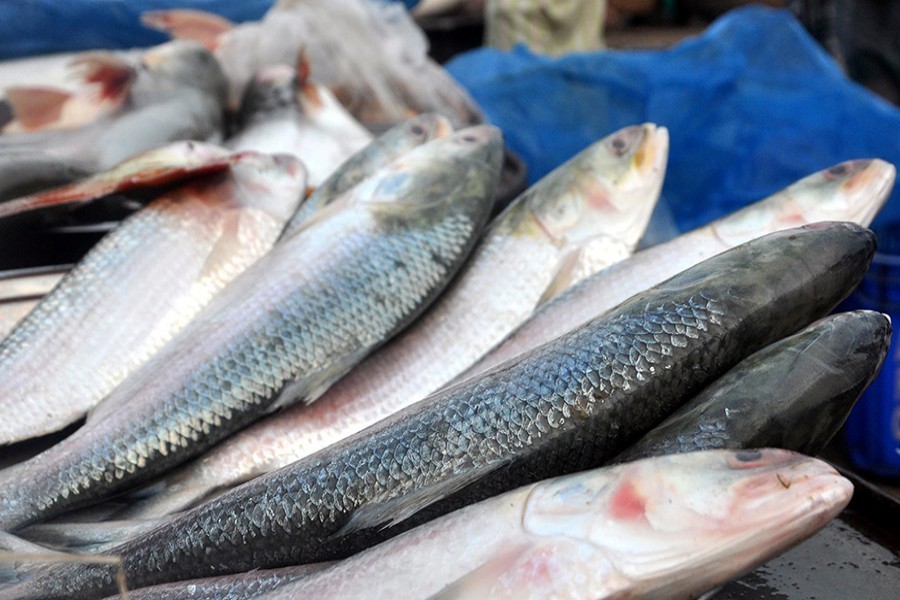The announcement to export 500 tonnes of the delicious hilsa to Bengalee-dominated West Bengal state of India delights people willing to see Dhaka and Kolkata come closer. The formal announcement was made on September 25 last. The export has been defined as a Durga Puja goodwill gesture on the part of Bangladesh for the Indian Bengalees. In both West Bengal and Bangladesh, the fish has been a highly popular one for centuries. In the undivided land of Bengal, as well as in the Tripura kingdom, the love for hilsa has in fact mirrored the people's love for the fish in general.
Thanks to its unique river-dominant geological landscape in the southern coastal part, Bangladesh has been an ideal breeding ground of hilsa since long. The fish is indigenous to seas, here the Bay of Bengal. During October every year, the mother hilsa swims upstream into the country's major rivers to lay eggs. As the spawn continue to grow into fry and later young fish, the mother fish return to the sea. Apart from a number of rivers, many grown-up hilsa are found concentrated in a few pockets in the estuaries of some rivers, especially the combined stream of the Padma and Meghna. Despite being contiguous with the eastern Bengal, the fish do not grow in abundance in West Bengal. Nature has deprived that region of hilsa, which is completely different from other fishes in terms of flavour and shape. Starting from the Myanmar coast through the Bay of Bengal rim in southern Bangladesh and West Bengal, the fish frequent the northwest Persian Gulf coast. It is known as 'hilsa shad' in that area. There are also few other hilsa species in the Pacific Ocean.
Notwithstanding these varieties, the East Bengal (now Bangladesh) hilsa is unanimously deserves the supreme position in every respect --- ranging from taste, aroma to popular demand. It seems surprising to many that the high demand for this delicious fish is limited to the greater Bengal only. Now that a great volume of hilsa is set to be exported to West Bengal after seven years, the fish finds a place in the country's export basket. The export of the fish to the Indian Bengali-speaking state has been on for nearly a decade. In the 2011-12 fiscal, the fish's export to India earned for Bangladesh an amount of Tk 3 billion. But overfishing in the following years, prompted by increasing demand outside, led to a paucity of the fish in Bangladesh, with its price going beyond the purchasing capacity of the middle and lower-middle class buyers. Following appeals from the fish traders to keep hilsa within Bangladesh for the most part, the government banned hilsa export in August, 2012.
The 'resumption of hilsa export' accompanies a diplomatic tinge. During West Bengal Chief Minister Mamata Banerjee's request to lift the ban on hilsa export during her visit to Dhaka in 2015, the Bangladesh Prime Minister Sheikh Hasina was said to have hinged the issue with the fair share of the Teesta water by inking a deal first. However, in order to stop smuggling of hilsa to West Bengal and due to increase in catch, the government in last January said the ban on the fish's export would be lifted.
Hilsa, the 2017 GI (Geographical Indication) tag winner, comprises nearly 11 per cent of all fishes produced in Bangladesh. It is exported to a number of countries. The fish contribute a component of one (01) per cent to the country's gross domestic product (GDP). Nearly 75 per cent of the world's hilsa originates in Bangladesh. Against this backdrop, the export of 500 tonnes of hilsa to W Bengal is set to enhance manifold the commercial prospects for the national fish.


